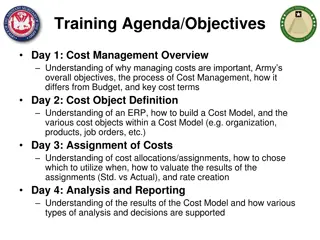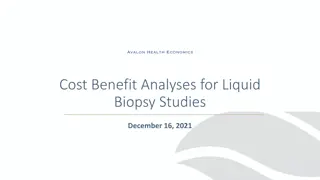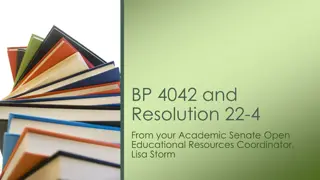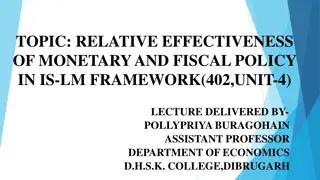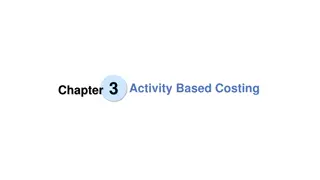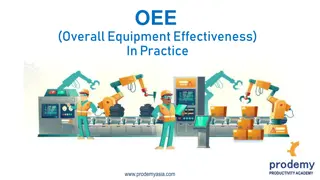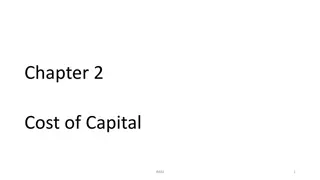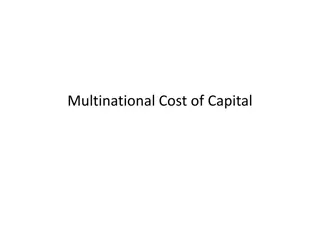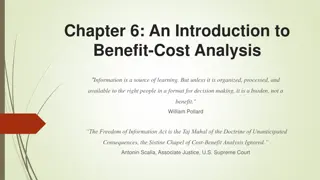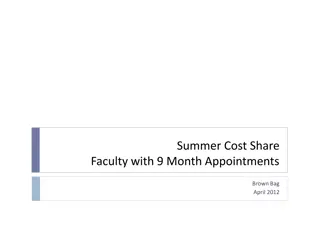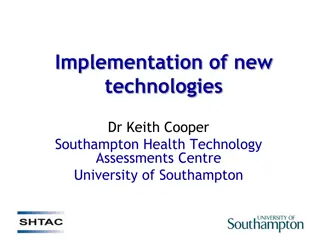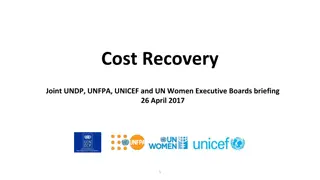SB 1371 and Cost Effectiveness
This content discusses the cost effectiveness of implementing best practices for leak detection and repair in order to prevent climate change impacts from natural gas leaks. It emphasizes the use of incremental cost per unit of methane emission reduction and highlights the concerns of TURN regarding ratepayer impacts. Various recommended best practices for emission source reduction are also mentioned.
Uploaded on Mar 05, 2025 | 0 Views
Download Presentation

Please find below an Image/Link to download the presentation.
The content on the website is provided AS IS for your information and personal use only. It may not be sold, licensed, or shared on other websites without obtaining consent from the author.If you encounter any issues during the download, it is possible that the publisher has removed the file from their server.
You are allowed to download the files provided on this website for personal or commercial use, subject to the condition that they are used lawfully. All files are the property of their respective owners.
The content on the website is provided AS IS for your information and personal use only. It may not be sold, licensed, or shared on other websites without obtaining consent from the author.
E N D
Presentation Transcript
R.15-01-008: Cost Effectiveness of Best Practices SB 1371 and Cost Effectiveness Goal of SB 1371 (Section 1) is to develop leak detection and leak repair procedures, in addition to safety, in order to prevent the climate change impacts from leaks of natural gas. Sections 975(e)(1) and 977 specifically direct the Commission to adopt best practices and procedures that are cost effective and provide best value for ratepayers. 1
R.15-01-008: Cost Effectiveness of Best Practices TURN Principles Use the incremental cost per unit of methane emission reduction as a benchmark tool to evaluate best practices, with range of carbon costs. This requires data. Cannot load lots of extraneous benefits in a cost effectiveness method. Use cost effectiveness up front to help select and prioritize new technologies for leak detection and leak abatement of non-hazardous leaks. Take a practical and phased approach to the incremental benefits of additional leak detection and leak abatement as get more certainty on costs of new technologies. 2
R.15-01-008: Cost Effectiveness of Best Practices Why is TURN concerned about cost-effectiveness? Leak detection and repair has significant ratepayer impacts PG&E (requested for 2017) leak survey and repair costs for safety compliance MWC DE (leak survey) $41 mm annual expenses MWC FI (leak repair)- $92 mm annual expenses MWC 50 (pipe replacement due to leaks) - $120 mm per year capital What is GHG value of reducing emissions 2014: 5 MMT-CO2e (?) total leakage from California IOUs At $15/ton = $75 million per year At $50/ton = $250 million per year 3
Some Examples of BPs Emission Source Recommended BPs* -Use better materials -Automatic detection: Smart Meters -Update emission factors (Proposed GTI study, $150K) -Capture large releases from point source -Replace susceptible materials (phase out cast iron) -More frequent inspection, using new tech detection -Shorten repair time: Find It, Fix It, policy -Update emission factors (Completed GTI study, under evaluation) -Reroute blowdown gas -Replace wet with dry seals (Oil & Gas Regulation) -Use no bleeds -Consider additional requirements, if any, to prevent future leaks beyond DOGGR & ARB regulations -Employ LDAR (Leak Detection and Repair) for above ground facilities Customer meters Blowdowns Pipeline leaks Compressors Pneumatics Gas Storage All Sources 4 *Red = Mandatory BPs
R.15-01-008: Cost Effectiveness of Best Practices TURN Concerns: Main Issues with proposed mandatory BPs: The cost of rerouting blowdown gas uncertain The cost of more frequent inspection high and the value proposition unclear Does the use better materials for customer meters only apply to new meters, or is it for retrofitting? The costs of new technologies and measures will be somewhat uncertain. It may be difficult to quantify the emission reduction benefits from certain measures, such as new leak detection technologies, which result in finding more leaks. 5
R.15-01-008: Cost Effectiveness of Best Practices Recommendations: Start with no regrets In face of cost uncertainty implement only best practices that clearly provide value and thus meet cost effectiveness standard Authorize pilots for certain technologies if lack data Make incremental adjustments once obtain better cost and methane reduction impact data for identified best practices Use cost effectiveness together with concrete cost estimates in rate cases. Iterate as cost certainty increases. 6




